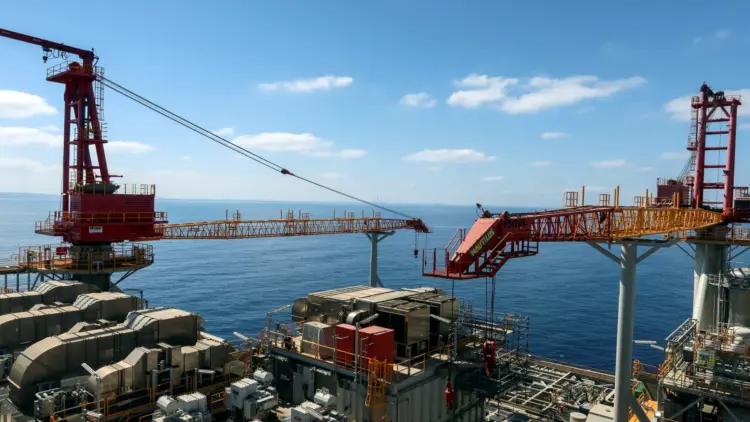Egypt’s ambitious plan to restore natural gas production to 6.6 billion cubic feet per day by 2027 represents a critical turning point for the North African nation’s energy sector and economic stability. The country’s dramatic transformation from a net gas exporter to importer over the past three years has exposed vulnerabilities in its energy infrastructure and highlighted the urgent need for sustained foreign investment.
Egyptian Prime Minister Mostafa Madbouly discusses production recovery strategy
Prime Minister Mostafa Madbouly’s announcement signals Egypt’s determination to reclaim its position as a regional energy hub while addressing domestic energy security concerns that have plagued the economy. This production recovery strategy could reshape Egypt’s role in global energy markets and restore investor confidence in the country’s long-term energy prospects.
Egypt’s gas production is expected to reach 6.6 billion cubic feet per day by 2027, Prime Minister Mostafa Madbouly said on Wednesday.
Egypt’s natural gas production began declining in 2022, forcing it to become a net gas importer, whether through expensive liquefied natural gas cargoes or Israeli supplies. The North African nation’s production is currently 4.1 billion cubic feet per day, Madbouly said.
Investment revival is one of the key priorities for Egypt
“Foreign investors and partners have resumed investments as a result of our commitment to pay off the accumulated arrears, so we have clear plans to return to previous production levels (of 6.6 billion cubic feet daily) over the next two years,” Madbouly said.
Madbouly said last month that Egypt has paid 1billiontointernationaloilcompaniesanditwassettopayanother1.4 billion before the end of the year.
Egypt’s commitment to settling outstanding debts with international oil companies marks a fundamental shift in the government’s approach to energy sector management, demonstrating fiscal discipline that could attract renewed foreign direct investment across multiple industries. The $2.4 billion payment plan represents more than just debt settlement—it signals Egypt’s recognition that reliable partnerships with international energy companies are essential for achieving sustainable production growth and technological advancement.
This financial commitment comes at a time when Egypt faces competing demands for foreign currency, making the prioritization of energy sector payments a strategic decision that underscores the government’s understanding of energy security as a cornerstone of economic stability. The successful execution of this payment schedule could establish Egypt as a more reliable partner for future energy investments and joint ventures.
Regional energy hub ambitions are coming into focus
Egypt’s strategic positioning as a regional energy hub depends not only on restoring domestic production but also on leveraging its existing liquefaction infrastructure at Idku and Damietta to process and export gas from neighboring countries, including Israel and Cyprus. The government’s comprehensive five-year vision for gas production capacity reflects an understanding that Egypt’s energy future lies in becoming a processing and transit center for Eastern Mediterranean gas resources rather than relying solely on domestic reserves.
This hub strategy could generate significant revenue streams through processing fees and transit tariffs while reducing Egypt’s dependence on expensive LNG imports that have strained the country’s foreign currency reserves. The success of this approach will require continued investment in pipeline infrastructure and maintaining competitive processing rates to attract regional gas producers seeking access to European and Asian markets.
Egypt’s gas production recovery plan represents a pivotal moment for the country’s energy independence and economic resilience in an increasingly volatile global energy market. The government’s commitment to paying international oil companies demonstrates fiscal responsibility that could restore investor confidence and attract the capital needed for sustained production growth.
Success in achieving the 6.6 billion cubic feet per day target by 2027 would not only enhance energy security but also position Egypt as a crucial player in the regional gas trade. The outcome of this ambitious recovery strategy will determine whether Egypt can reclaim its status as an energy exporter and regional hub or remain dependent on costly imports.
GCN.com/Reuters


